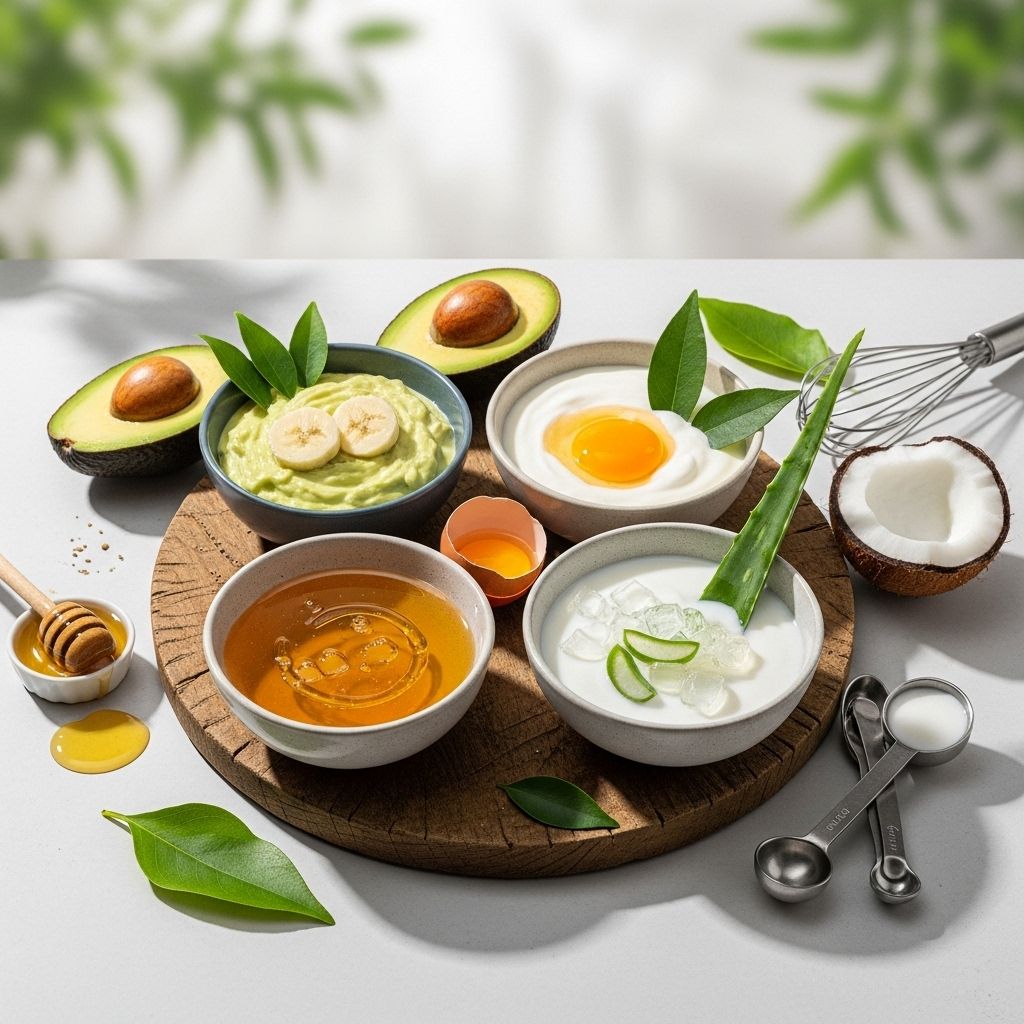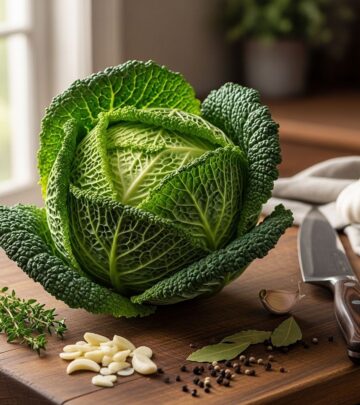DIY Protein Hair Mask: Restore, Strengthen, and Shine Naturally
Natural kitchen ingredients work together to rebuild damaged strands and boost elasticity.

Is your hair feeling weak, dull, or prone to breakage? You might need a protein boost! Just as your body thrives on protein, so does your hair. Incorporating a DIY protein hair mask into your routine can transform dry, brittle strands into luscious, resilient locks—right from the comfort of your home.
Why Protein Is Essential for Hair Health
Protein is the main structural component of hair, primarily in the form of keratin. Factors like heat styling, chemical treatments, sun exposure, and even regular washing can strip hair of vital proteins, leading to:
- Dryness and brittleness
- Split ends
- Frizz and tangling
- Noticeable breakage
A protein deficit can leave hair looking lifeless and difficult to manage. While consuming protein-rich foods helps, topical treatments like homemade protein masks can deliver intensive, targeted restoration directly to each strand.
What Is a Protein Hair Mask?
A protein hair mask is a deep-conditioning treatment formulated with protein-rich, restorative ingredients. When applied to hair, these masks:
- Repair the hair shaft by filling in microscopic gaps
- Restore elasticity and strength
- Smooth cuticles for shine and manageability
- Protect against further protein loss
Most commercial masks use proteins like hydrolyzed keratin, silk, or wheat. However, DIY masks crafted with ingredients such as eggs, yogurt, avocado, and banana can offer similar nourishing benefits, naturally.
Benefits of Using a Homemade Protein Hair Mask
- Repairs damage: Helps recover from heat, coloring, and styling stress.
- Reduces breakage: Reinforces hair to minimize splitting and snapping.
- Adds shine and softness: Smoothes the cuticle for healthier-looking hair.
- Restores strength and elasticity: Makes hair more resilient to daily wear and tear.
- 100% natural: No harsh chemicals, synthetic fragrances, or preservatives.
- Budget-friendly: Uses ingredients commonly found in your kitchen.
How to Know If Your Hair Needs a Protein Mask
Not sure if your hair is craving more protein? Watch out for these signs:
- Excessive shedding or noticeable breakage
- Hair feels mushy or limp when wet
- Difficulty holding a style/shape
- Strands feel rough or porous, especially at the ends
If several of these sound familiar, your hair could benefit from regular protein treatments.
Best DIY Protein Hair Mask Recipes
The following masks are easy to make, effective, and packed with essential nutrients to rejuvenate all hair types. Pick the recipe that best suits your hair concerns!
1. Avocado, Banana, Egg & Olive Oil Protein Mask (For All Hair Types)
Why it works: Avocado is rich in fatty acids and protein that deeply hydrate and repair damage. Bananas restore moisture and add shine. Eggs are packed with both protein and biotin for strengthening, while olive oil controls frizz and reduces split ends.
- 1 ripe avocado
- 1 ripe banana
- 1 egg (or just egg whites for a lighter mask)
- 2 tablespoons olive oil
Directions:
- Blend all ingredients into a smooth, creamy paste.
- Dampen hair with water to aid application.
- Apply mask starting at the roots, work through to tips, focusing especially on ends.
- Leave on for 30–45 minutes.
- Rinse thoroughly and shampoo as usual.
Frequency: Use once a week for best results.
2. Coconut Oil & Honey Repair Mask (For Damaged, Dry Hair)
Why it works: Coconut oil penetrates the hair shaft, supplying deep moisture, while honey draws in and retains hydration, leaving hair soft and shiny.
- 1 tablespoon coconut oil
- 1 tablespoon honey
Directions:
- Combine coconut oil and honey in a bowl.
- Gently heat until melted and mixed.
- Apply evenly from roots to tips.
- Cover with a shower cap and leave for 20–30 minutes.
- Rinse with warm water, then shampoo.
Tip: Focus on the mid-lengths and ends for extra moisture where hair is driest.
3. Yogurt and Egg Protein Mask (For Fine or Limp Hair)
Why it works: Yogurt contains lactic acid to cleanse the scalp and mild proteins to strengthen hair. Eggs deliver a potent protein punch for volume and resilience.
- 3 tablespoons plain yogurt
- 1 egg
Directions:
- Mix yogurt and egg until combined.
- Apply to damp, clean hair.
- Leave on for 30 minutes.
- Rinse with lukewarm water (avoid hot water to prevent ‘cooking’ the egg).
4. Gelatin Protein Rebuilder (For Weak, Over-Processed Hair)
Why it works: Gelatin is a source of hydrolyzed protein, similar to what’s found in salon products, that attaches to the hair cuticle and repairs surface damage.
- 1 tablespoon plain, unflavored gelatin
- 1 cup warm water
- 1 teaspoon apple cider vinegar (optional, for shine)
Directions:
- Dissolve gelatin in warm water, stir until smooth.
- Add apple cider vinegar if desired.
- Apply to clean, damp hair. Leave on for 10–15 minutes.
- Rinse thoroughly with cool water.
Frequency: Use every 3–4 weeks. Overuse can make hair too stiff.
Table: Quick Guide to DIY Protein Masks by Hair Type
| Mask | Main Ingredients | Best For | Frequency |
|---|---|---|---|
| Avocado-Banana-Egg-Olive Oil | Avocado, Banana, Egg, Olive Oil | All hair types, dryness, damage | Weekly |
| Coconut Oil & Honey | Coconut Oil, Honey | Dry, frizzy, colored hair | Weekly |
| Yogurt & Egg | Yogurt, Egg | Thin, limp, oily hair | Weekly |
| Gelatin Rebuilder | Gelatin, Water, Apple Cider Vinegar | Severely damaged, over-processed hair | Every 3–4 weeks |
Tips for Getting the Most Out of Your Protein Hair Mask
- Always start with clean, damp hair: This helps the mask spread easily and absorb better.
- Focus on lengths and ends: These areas are usually most damaged.
- Cover with a shower cap: Traps heat to open up the hair cuticle for deeper penetration.
- Do not overuse: Too much protein can make hair stiff and dry. Once a week, or biweekly, is ideal for most masks.
- Alternate with moisturizing masks: Balance protein with hydrating treatments to keep soft, shiny hair.
Precautions and Who Should Avoid Protein Masks
- Protein-sensitive hair may become stiff or brittle after masks—reduce frequency or try moisturizing recipes instead.
- If you have low porosity hair (hair that resists absorbing moisture), use lighter proteins like yogurt or eggs rather than heavy gelatin-based masks.
- Always rinse thoroughly to prevent residue.
- Perform a patch test if you are allergic or sensitive to any ingredients (especially eggs or dairy).
How Often Should You Use a Protein Hair Mask?
Depending on your hair’s condition:
- Severely damaged/chemically treated hair: Weekly protein masks (alternate with moisturizing masks)
- Moderate damage/normal hair: Once every two weeks
- Healthy hair: Once a month for maintenance
Watch how your hair responds. If it starts to feel stiff or brittle, reduce the frequency.
Frequently Asked Questions (FAQs) About DIY Protein Hair Masks
Q: Can I use a protein hair mask on colored or chemically treated hair?
A: Yes! In fact, chemically processed hair often needs extra protein. Protein masks help repair bonds broken during coloring, perming, or relaxing, making hair stronger and more resilient.
Q: Will a protein mask make my hair greasy?
A: Protein masks made with heavier ingredients, like eggs or oils, can leave residue if not rinsed out fully. Always follow with a gentle shampoo and focus on mid-lengths to ends if your scalp is naturally oily.
Q: How long should I leave a protein hair mask on?
A: Typically, 15–45 minutes is optimal. Leaving it on longer does not always increase the benefits and may lead to unnecessary residue or stiffness.
Q: Can I make these masks in advance and store them?
A: Homemade protein masks use fresh ingredients and lack preservatives, so it’s best to mix just before applying. Discard any leftovers to avoid spoilage.
Q: How do I know if my hair is protein-sensitive?
A: If your hair feels unusually stiff, straw-like, or brittle after a protein treatment—or if breakage increases—reduce use or switch to a moisturizing mask. Everyone’s hair may react differently.
Simple Protein-Rich Habits for Healthy Hair
- Eat a balanced diet with lean meats, eggs, leafy greens, and nuts for internal hair support.
- Limit use of hot tools and harsh chemicals to prevent excessive protein loss.
- Try gentle, sulfate-free shampoos to maintain protein and moisture balance.
Summary: Protein Masks for Vibrant, Resilient Hair
Homemade protein hair masks are an excellent, cost-effective way to restore your hair’s shine, resilience, and strength without relying on store-bought treatments. With just a few simple kitchen ingredients and a little self-care time, you can transform damaged, lifeless strands into healthy, manageable hair. Find the recipe that works for you, apply regularly, and enjoy the salon-quality results!
References
- https://www.youtube.com/watch?v=RMpF36s9Cn4
- https://www.luxyhair.com/blogs/hair-blog/7-diy-hair-masks-we-know-youll-love
- https://www.oprahdaily.com/beauty/hair/a32255356/diy-hair-mask-for-growth/
- https://indianhair.net/blogs/journal/10-effective-homemade-protein-rich-hair-packs
- https://napturallycurly.com/protein-treatment-natural-transitioning-hair/
- https://curlyhairlounge.com/diy-protein-hair-treatment
- https://www.beautycon.com/article/5-diy-recipes-for-protein-sensitive-hair
- https://www.healthline.com/health/avocado-hair-mask
Read full bio of medha deb












